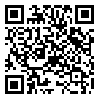Background and Aim: Since anyone can freely share any kinds of information in the cyberspace almost without authenticity, validation information seems important. This paper examines the concept of credibility and describes and analyzes some well-known models for the evaluation of the Web credibility.
Methods: This research is a review in terms of research methodology and theoretical in terms of the goal. Data collection was using documentary method.
Results: The assessment of known models of Web Credibility including prominence-interpretation theory of Fogg, Wathen and Burkell’s model for how users judge the credibility of on-line information, Hilligoss and Rieh’s unifying framework of credibility, Sundar’s MAIN model, Metzger’s dual processing model of credibility assessment, Lucassen et al.’s revised 3S-model of credibility, and Choi new framework for web credibility showed that the systematic concept of the connection between credit key dimensions and criteria that can be used to assess the credibility of the Web exists in none of these models other than Choi and thus the templates and the theories have limited explanatory power for a comprehensive interpretation of findings of experimental studies.
Conclusion: Due to lack of imperical testing of these theoretical frameworks through standard tools on a large scale, no one was empirically supported. Thus, it is necessary to examine these frameworks empirically to improve their validity with an experimental basis.
| Rights and permissions | |
 | This work is licensed under a Creative Commons Attribution-NonCommercial 4.0 International License. |



